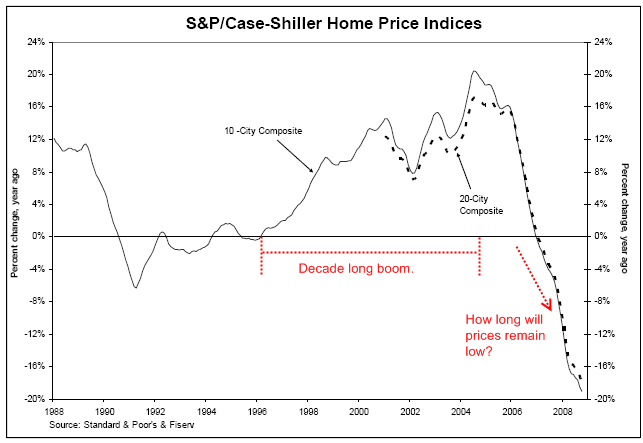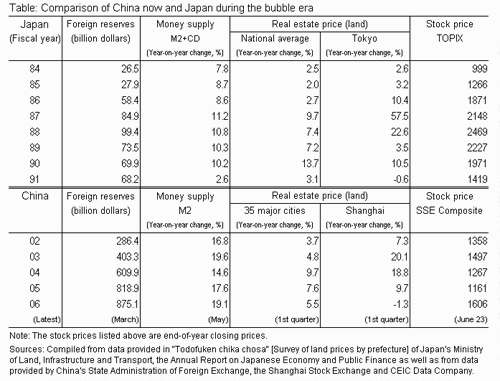The Asset Price Bubble and Monetary Policy Japan s Experience in the Late 1980s and the Lessons
Post on: 17 Июнь, 2015 No Comment

MONETARY AND ECONOMIC STUDIES (SPECIAL EDITION)/FEBRUARY 2001
The Asset Price Bubble
and Monetary Policy:
Japan’s Experience
in the Late 1980s
and the Lessons
Background Paper
by Kunio Okina, Masaaki Shirakawa,
and Shigenori Shiratsuka
Since the latter half of the 1980s, Japan’s economy has experienced
the emergence, expansion, and bursting of a bubble economy,
characterized by a rapid rise in asset prices, the overheating of
economic activity, and the expansion of money supply and credit.
This paper examines the mechanism by which the bubble economy
was generated and summarizes lessons a central bank should draw
from the experience in order to prevent it from happening again.
Specifically, by focusing on the intensified bullish expectations
that played an important role behind the large fluctuations in asset
prices and the economy, the process of the emergence, expansion, and
bursting of the bubble is examined in relation to the monetary policy
at the time. Based on this analysis, the paper discusses a framework
for monetary policy conducive to achieving both price stability and
financial system stability.
Key words: Asset prices; Bubble; Intensified bullish expectations;
Monetary policy; Sustained price stability; Financial
stability; Forward-looking monetary policy
Kunio Okina: Bank of Japan (E-mail: kunio.okina@boj.or.jp)
Japan’s economy has experienced substantial fluctuations since the latter half of the
1980s. From the latter half of the 1980s to the early 1990s when the bubble emerged
and expanded, we saw a rapid and large surge in asset prices, a sizable increase in
money supply and credit, and the expansion of economic activity for a protracted
period. During the subsequent period of the bursting of the bubble from the early
1990s, Japan experienced a plummet in asset prices, the accumulation of huge
nonperforming assets and resulting difficulties faced by financial institutions, and a
prolonged recession.
There have been various discussions and analyses among central bankers,
academia, and economists both at home and abroad with respect to the mechanism
of how the bubble economy was generated, although up to now a consensus is
far from being reached.1Similarly, discussions are under way as to how monetary
policy should be conducted when asset prices rapidly rise. In fact, the evaluation of
monetary policy depends very much on financial and economic conditions under
which it is conducted. For example, from the latter half of 1987 when asset prices
rapidly rose and economic expansion became increasingly certain, the Bank of Japan
(BOJ) explored the possibility of monetary tightening in view of concern over
inflation and excessive monetary easing, but could not present an argument that was
regarded as sufficiently convincing for tightening. In contrast, immediately after the
bursting of the bubble, there were periods when monetary tightening was generally
praised as an appropriate measure. As the recession became protracted, the BOJ was
exposed to severe criticism that prolonged monetary easing since the latter half of the
1980s had brought about the bubble economy, which led to the subsequent deep
recession and nonperforming-asset problem.
Recalling the situation when the bubble emerged, the BOJ expressed concern, at a
relatively early stage, over inflationary pressure and the adverse effects of excessive
monetary easing. Such concerns were also shared by not a few economists at that
time. However, in view of stable prices indicated by various related indices, those
who were concerned with inflationary pressure had difficulty in reconciling stable
price indices with concern over future inflation. Furthermore, there did not exist a
commonly shared understanding as to what exactly are problems caused by the
increase in asset prices.
This paper intends to draw lessons based on the experience of monetary policy
during the bubble period rather than a simple afterthought. In view of such an
intention, this paper attempts to describe as accurately and as concretely as possible
the economic, financial, and social background under which monetary policy was
being conducted. Needless to say, the lessons derived from the experience during the
bubble period could differ depending on the economic theories that are being
applied and also on how the general public perceived the central bank. Some may
find this paper overstates the importance of monetary policy and others find it
396 MONETARY AND ECONOMIC STUDIES (SPECIAL EDITION)/FEBRUARY 2001
1. Literature that has dealt with Japan’s bubble period includes Ohta (1991), Noguchi (1992), Ueda (1992), Iwata
(1993), Ministry of Finance (1993), Suzuki (1993), Takao (1994), Ogata (1996), Cargill, Hutchison, and Ito
(1997), Ogawa and Kitasaka (1998), Yoshitomi (1998), Okumura (1999), and Mieno (2000).
Page 3
too detached or self-defensive, neither of which intention the authors had in mind.
The main purpose of this paper is to present the authors’ views on the cause of

the bubble since the late 1980s and the lessons for monetary policy as well as to
objectively describe the background behind these views, thereby further enriching
discussion on the bubble.
This paper is structured as follows. Chapter II reviews the development of Japan’s
economy during the bubble period, and Chapter III examines the mechanism behind
the emergence and expansion of the bubble. Chapter IV analyzes how monetary
policy was conducted in the process of the emergence and expansion of the bubble
as well as the influence of prolonged monetary easing on the process. Chapter V
considers the question of why monetary tightening was delayed, and Chapter VI
discusses the lessons learned from the bubble period that the BOJ should be aware of
in conducting monetary policy.
II. Overview of Japan’s Economy during the Bubble Period
A. Definition of the Bubble Economy
While the term “bubble” is used differently among people, based on the experience
of Japan’s economy in the late 1980s, let us characterize the bubble economy in this
paper by three factors: a rapid rise in asset prices, the overheating of economic
activity, and a sizable increase in money supply and credit (see Figure 1 for monetary
and economic conditions after the 1980s).
The definition of the bubble period may vary depending on which one of the
three factors one emphasizes. The rise in asset prices started around 1982 and
accelerated from 1985 to 1986. However, the rise was relatively moderate in the early
stage and two years (1985–86) coincided with the “endaka recession” (a recession
caused by the appreciation of the yen). While few view these years as being part of
the bubble period, many consider 1987 as the beginning of the bubble period for
the following reasons. First, according to the Economic Planning Agency’s (EPA)
reference dates of the business cycle, the economy bottomed out in November 1986
and 1987 was a year of expansion. Second, while the year-on-year growth rate of
money supply (M2+CDs) and credit had been declining somewhat in 1986, albeit at
a high level, it started to accelerate around 1987. As such, 1987 saw an accelerating
rise in money supply and credit, a rapid increase in asset prices, and the economy
entering a recovery cycle. Hence, many naturally regard 1987 as the starting year of the
bubble. However, some might argue that 1987 should not be included in the bubble
period since the recovery of the economy was not clearly recognized in the first half
of the year and there was a worldwide stock market crash in October of the same year.
Views differ as to when the bubble began to burst. Stock prices in terms of the
Nikkei 225 peaked at end-1989,2while land prices in terms of the Urban Land Price
Index (six major cities, commercial areas) of the Japan Real Estate Institute peaked
2. The Nikkei OTC Index hit a peak on July 9, 1990, increasing almost 60 percent even after the Nikkei 225 peaked














